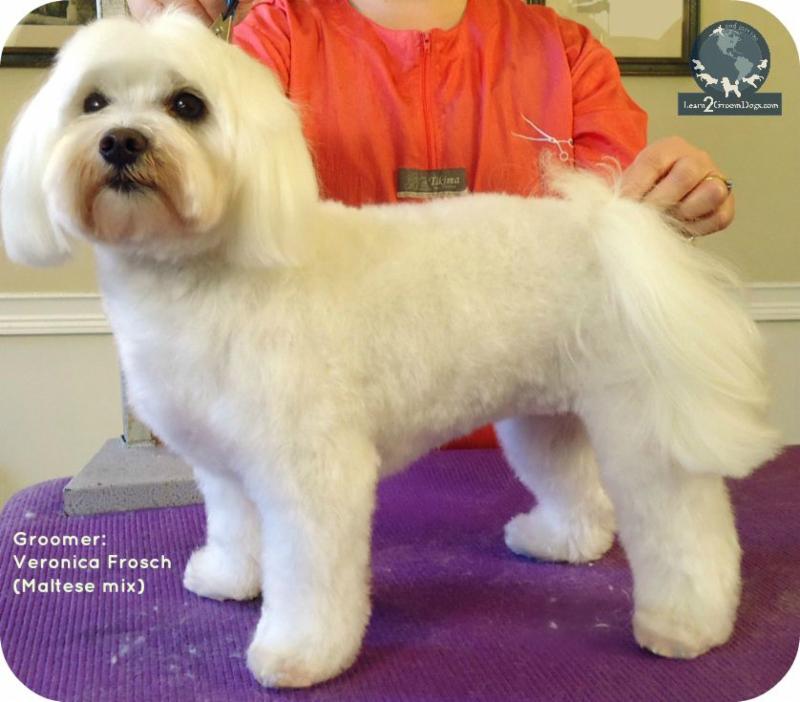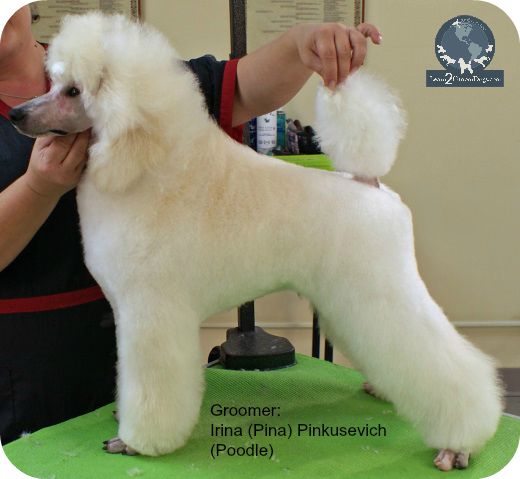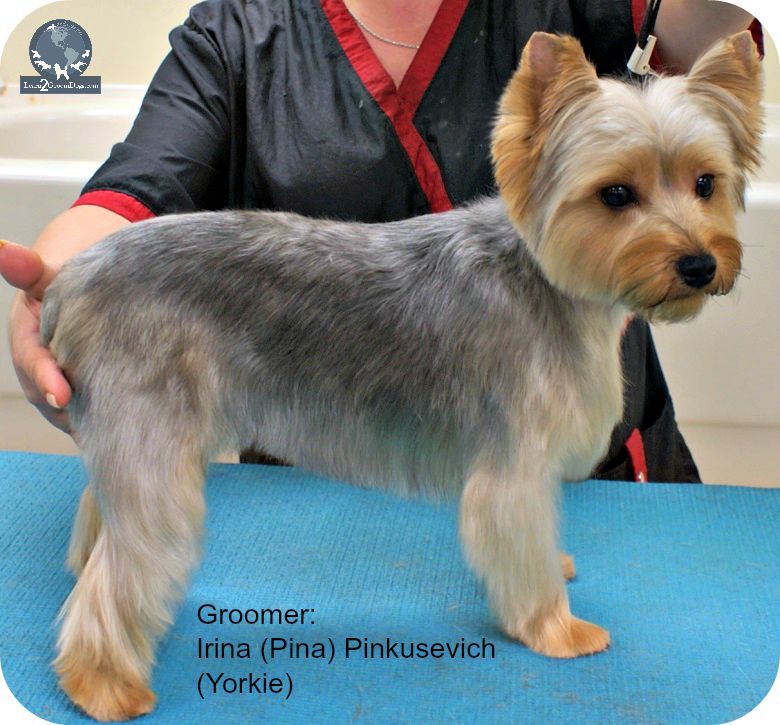 “Give my dog a puppy cut.”
“Give my dog a puppy cut.”
Ask 10 customers or groomers to describe this style and I bet you get 10 different answers. One one hand, it’s a great conversation starter! On the other, it’s a quick way to discover how easy it is to misunderstand one another.
The puppy cut is popular because it works well on a wide variety of pets. Almost any breed that grows longer coat can be done in this easy-to-care for style. Yet, the puppy cut is also the most misunderstood haircut in grooming salons around the country. Why? There are no clear directions of what this trim actually is or how it should be done. It’s left up to individual personal interpretation by owners, groomers, or talented pet stylists.
The puppy cut started as a trim style for young Poodles in the dog show world. Once the puppy is a year old, it is put into the elaborate adult haircut for the conformation ring. Today, the term “puppy cut” is used very loosely. It can apply to a wide variety of different breeds. It’s highly adaptable to any size of dog or coat type.
Many owners love this style of trim – and with good reason. It’s cute, easy to care for, and easy for customers to remember by name. In this trim, the dog does not drag in dirt and debris from outdoors. Their ears don’t drag in the food or water dish. The need for brushing between grooming appointments is minimized. On smaller pets, bathing between grooming appointments is a breeze. What’s not to love?
So what is it?
Essentially, the puppy cut is one length all over. The most common length is between 1-2 inches over the body, legs, tail, head, and ears. Typically, it’s done with a clipper fitted with a long guard comb over the blade. There should not be any clipper marks, uneven coat, or sharp edges left in the fur. Next to a powerful clipper, high quality blenders are your best friends when doing this trim. Everything is soft and plush, like a fluffy puppy.
This is where things get tricky. In some circles the puppy cut can also be known as a teddy bear trim, summer cut, or kennel cut. I’ve even seen some salons turn their version of the trim into their “signature haircut.” Generally, the only things that change between theses trims are the names and the length of coat.
 It doesn’t stop there! Others associate the puppy cut with smooth-coated breeds like the Boxer, Pug, or Beagle. Basically, the idea is of a youthful, “puppyish” look. Hence the name.
It doesn’t stop there! Others associate the puppy cut with smooth-coated breeds like the Boxer, Pug, or Beagle. Basically, the idea is of a youthful, “puppyish” look. Hence the name.
With all these interpretations, it’s easy to envision things differently. While that’s not a bad thing, not being clear on what the final look will be can definitely affect the result and your relationship with the customer. If an owner is requesting this trim for the first time, be prepared to discuss the trim in detail. DO NOT ASSUME YOU ARE BOTH ON THE SAME PAGE! Communication is the key to a happy customer.
Getting a clear understanding starts with a conversation. Spend a few minutes with the client and the pet before the customer leaves your salon.
Getting the conversation right starts with the 3 L’s:
Look – Use those precious moments as your clients walks in to observe the pet. What do you see? These first impressions can be used to guide your conversation.
Lead – This is the time to ask for clarity. Ask leading questions about each area of the pet (body, head, ears, legs/feet, and tail):
- How do you want your pet to look? Smooth and sleek or fluffy and plush?
- What is the pet’s lifestyle? Is he the life of the party or a designated lap dog?
- How long should be coat be? Remember, “short” means something different to everyone. Be specific to be sure.
- How should the head look? The head and face are a big part of the dog’s personality. Getting this part right is very important to your customer.
Listen – Listen for details and clues. The customer may not know grooming terminology – that’s one reason they rely on you. Interpret their observations and preferences so you can create a clear mental picture of style options.
 Now that you’re clear about what the customer wants, it’s time to put your talent and experience to work. A skilled pet professional will know how to make minor changes to the trim that will enhance the pet’s appeal. If the coat is too tangled to do the longer trim, you’ll be able to suggest alternatives that work best for his current condition. You can then discuss ways the customer can work on the coat at home to make it possible to have a longer, fluffier look as the pet grows out.
Now that you’re clear about what the customer wants, it’s time to put your talent and experience to work. A skilled pet professional will know how to make minor changes to the trim that will enhance the pet’s appeal. If the coat is too tangled to do the longer trim, you’ll be able to suggest alternatives that work best for his current condition. You can then discuss ways the customer can work on the coat at home to make it possible to have a longer, fluffier look as the pet grows out.
Educating clients on proper pet hygiene is a valuable service most salons offer for free to their clients. In order to keep the dog looking its best, you can offer suggestions for maintaining this haircut between grooming appointments. At home brushing and bathing can make a big difference in how they look and smell, too. You can also make suggestions on how often the trim should be done based on the pet’s lifestyle and coat texture. Always remember, your clients are the lifeblood of your business. Taking a little extra time up front for a warm and welcoming pet consultation will go a long way toward building a solid relationship with them.
Try these tips and see if it helps you get closer to your client’s idea of a puppy cut… the first time!
Happy trimming!
Melissa

What’s YOUR idea of a puppy cut? Share some pictures on our Facebook page with your Melissa Verplank family.


